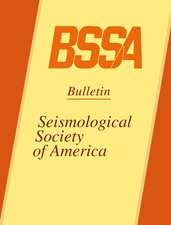 Stephen Thompson of LCI has co-authored a technical paper titled, “Estimating Time-Dependent Seismic Hazard of Faults in the Absence of an Earthquake Recurrence Record” with Glenn Biasi of the University of Nevada, Reno (now at USGS). The paper is published in the February, 2018 edition of the Bulletin of the Seismological Society of America.
Stephen Thompson of LCI has co-authored a technical paper titled, “Estimating Time-Dependent Seismic Hazard of Faults in the Absence of an Earthquake Recurrence Record” with Glenn Biasi of the University of Nevada, Reno (now at USGS). The paper is published in the February, 2018 edition of the Bulletin of the Seismological Society of America.
The paper presents a method for estimating earthquake time dependence for fault sources in probabilistic seismic hazard analysis. The method uses the fault-slip rate and available information about the amount of time that has elapsed since the most recent event (tMRE). This estimate is called the Equivalent Poisson Hazard Ratio (EPHR) because it adjusts the corresponding time-independent (Poisson) hazard estimate. Other inputs include generalized distributions for the possible average displacement per event and the recurrence model coefficient of variation. Lognormal, Brownian passage time, and Weibull time-dependent recurrence models are considered. The paper explores application of the method for two faults on the central California coast. For the moderate slip rate Hosgri fault (~2 mm/yr), the best limiting value of tMRE = 242 yrs is a significant fraction of the expected recurrence interval; the estimated weighted mean EPHR is 1.24. The low slip rate (~0.3 mm/yr) Los Osos fault has average recurrence intervals that are long compared with the minimum tMRE = 242 yrs; for this fault we estimate a weighted mean EPHR of 1.03. Although the mean estimate for the low slip rate fault is near unity, the uncertainty in EPHR ranges from 0.26 to 1.54 at the 90% confidence interval. Thus, the EPHR method is useful even for low slip rate faults for capturing epistemic uncertainty in regards to whether a fault is early, about due, or past due when considering its average recurrence interval. For all faults, even limiting evidence about the tMRE from paleoseismic investigation can significantly improve the mean EHPR estimate.
